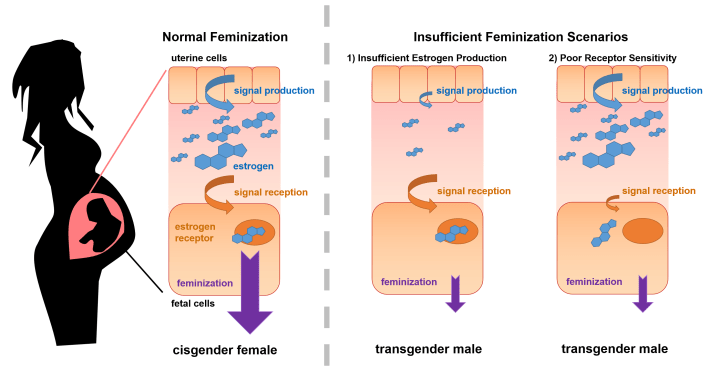ScienceRocks
Democrat all the way!
- Banned
- #1
Transgender women tend to have brain structures that resemble cisgender women, rather than cisgender men. Two sexually dimorphic (differing between men and women) areas of the brain are often compared between men and women. The bed nucleus of the stria terminalus (BSTc) and sexually dimorphic nucleus of transgender women are more similar to those of cisgender woman than to those of cisgender men, suggesting that the general brain structure of these women is in keeping with their gender identi...
In 1995 and 2000, two independent teams of researchers decided to examine a region of the brain called the bed nucleus of the stria terminalis (BSTc) in trans- and cisgender men and women (Figure 2). The BSTc functions in anxiety, but is, on average, twice as large and twice as densely populated with cells in men compared to women. This sexual dimorphism is pretty robust, and though scientists don’t know why it exists, it appears to be a good marker of a “male” vs. “female” brain.
Thus, these two studies sought to examine the brains of transgender individuals to figure out if their brains better resembled their assigned or chosen sex.
Interestingly, both teams discovered that male-to-female transgender women had a BSTc more closely resembling that of cisgender women than men in both size and cell density, and that female-to-male transgender men had BSTcs resembling cisgender men.
These findings have since been confirmed and corroborated in other studies and other regions of the brain, including a region of the brain called the sexually dimorphic nucleus (Figure 2) that is believed to affect sexual behavior in animals.
Several studies confirmed previous findings, showing once more that transgender people appear to be born with brains more similar to gender with which they identify, rather than the one to which they were assigned.
Between the (Gender) Lines: the Science of Transgender Identity - Science in the News
======
RESULTS:
In controls, males have significantly higher FA values than females in the medial and posterior parts of the right superior longitudinal fasciculus (SLF), the forceps minor, and the corticospinal tract. Compared to control females, FtM showed higher FA values in posterior part of the right SLF, the forceps minor and corticospinal tract. Compared to control males, FtM showed only lower FA values in the corticospinal
CONCLUSIONS:
tract. White matter microstructure in female to male transsexuals before cross-sex hormonal treatment. A diffusion tensor imaging study. - PubMed - NCBIOur results show that the white matter microstructure pattern in untreated FtM transsexuals is closer to the pattern of subjects who share their gender identity (males) than those who share their biological sex (females). Our results provide evidence for an inherent difference in the brain structure of FtM transsexuals.
It appears to me that the science supporting transgendermism as natural is quite strong.


 ....
.... 

